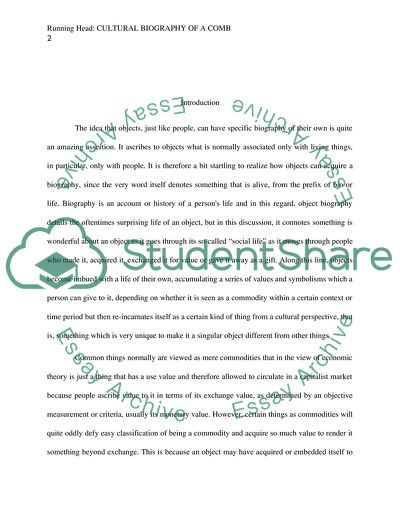Cite this document
(Cultural Biography of a Comb Research Paper Example | Topics and Well Written Essays - 2750 words, n.d.)
Cultural Biography of a Comb Research Paper Example | Topics and Well Written Essays - 2750 words. Retrieved from https://studentshare.org/biographies/1786611-object-biography
Cultural Biography of a Comb Research Paper Example | Topics and Well Written Essays - 2750 words. Retrieved from https://studentshare.org/biographies/1786611-object-biography
(Cultural Biography of a Comb Research Paper Example | Topics and Well Written Essays - 2750 Words)
Cultural Biography of a Comb Research Paper Example | Topics and Well Written Essays - 2750 Words. https://studentshare.org/biographies/1786611-object-biography.
Cultural Biography of a Comb Research Paper Example | Topics and Well Written Essays - 2750 Words. https://studentshare.org/biographies/1786611-object-biography.
“Cultural Biography of a Comb Research Paper Example | Topics and Well Written Essays - 2750 Words”, n.d. https://studentshare.org/biographies/1786611-object-biography.


